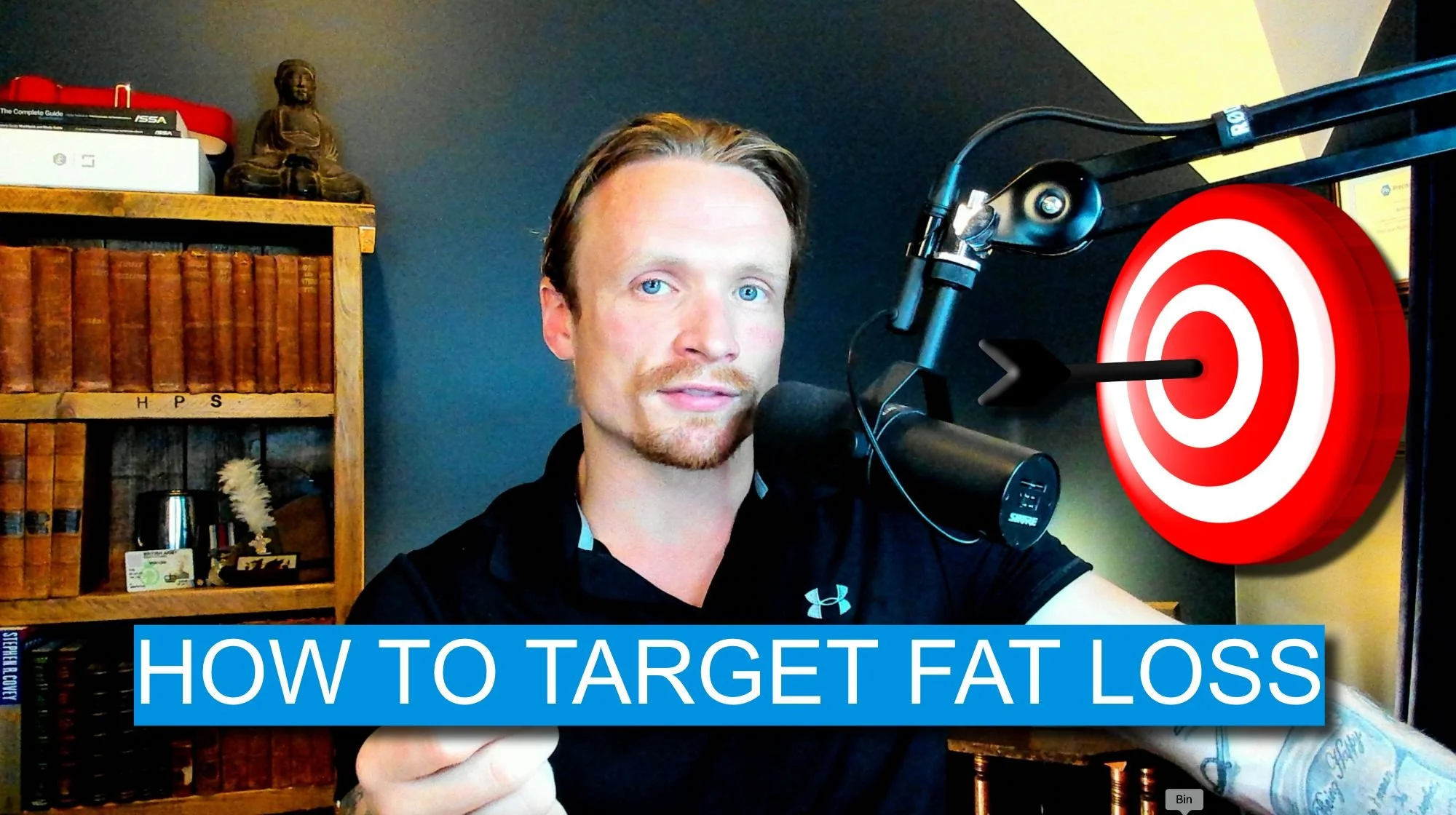How to target fat loss
Firstly, let me explain what I mean by target fat loss. I’m talking about burning, oxidising, shredding body fat – targeting this, as opposed to shredding both body fat and muscle tissue. I’m also going to cover spot reduction later in this article.
Prefer to watch than read? Then please check out the video below:
Why target fat loss
Obviously, the reason it’s important to target fat tissue when looking to lose weight is because you don’t want to waste time, energy, motivation, or do yourself a disservice by shredding muscle tissue.
Shred body fat and preserve muscle tissue
Let’s say you’re in a 500-calorie deficit. This means you’re consuming 500 fewer calories than would be required to maintain your weight. This, for you, could be you eating 1000 calories, 1500 calories, 2000 calories or even 2500 calories – it depends largely on your size, age, gender, activity levels and metabolism. Everyone is different, but moving on. We’re consuming 500 fewer calories than we need to maintain weight, so naturally, our body is looking for energy. It can take this energy from fat tissue or muscle tissue, and the more it takes from one, the less it takes from another. Thus, targeting fat loss requires you to preserve muscle mass. When you’re in a 500-calorie deficit, do you want your body to help fuel your day by getting all 500 calories from body fat or half from fat and the other half from muscle? You, of course, want to target that fat loss.
How can we target fat loss?
How do we do this? Well, if we look at a recent meta-analysis, we can see that the most effective way of shredding body fat is via energy restriction combined with a high-protein diet and exercise. This shouldn’t be news to clients of mine or long-term watches of my content. We need training to stimulate the muscle, protein to maintain, recover and develop it, and a deficit to shred fat. What also shouldn’t be news is that resistance training (AKA lifting weights), as you can see on this graph, was more effective than aerobic training, both with and without energy restriction.
Now, for most of my clients, I recommend both if you have time, but if not, we want to prioritise resistance training. Not only to sculpt an athletic physique but also to shred the most body fat as quickly as possible.
Spot reduction
We can’t talk about targeting fat loss without touching on spot reduction, which is the belief that if you train a certain area, for example, the abs, you’ll burn more localised fat (spot lipolysis) around that area. This belief was beautifully summarised in a 2022 meta-analysis, which concluded: “Localised muscle training had no effect on localised adipose tissue depots, i.e., there was no spot reduction, regardless of the characteristics of the population and of the exercise program”. However, for the sake of transparency and education, there is a cool study in 2017 showing that this is actually possible; it showed that if you just train the upper body, you’ll lose more body fat there, and the same applies to the lower body. But really, your body will tend to deposit body fat where it wants, which will largely be dictated by your genetics. So, even if you burn more fat in one area at a time, things will generally return to normal in terms of overall fat distribution due to how your body tends to store more in some places and less in others. I suspect there are many people whose sole training will consist of ab training. Perhaps they bought a “game-changer” of a device off QVC that targets the midsection, yet how many people do you see with shredded abs whilst still having visible body fat in the arms, legs, and face? It doesn’t really work like that. Thus, spot reduction is a bit of a wasted endeavour. At least, that’s what the majority of the research suggests. What you want to focus on is losing fat and building muscle all over, which is done via an energy deficit, and stimulating the entire body via full-body resistance training. You want to train the entire body to develop or, at the very least, preserve muscle all over because, as we’ve discussed, the more muscle we keep, the more fat we lose, and even better, if you build muscle, you’ll burn more calories throughout the day as muscle tissue is very energy demanding.
Summary
In short, if you want to lose as much fat as possible – if you want to target fat loss, you want to be in a calorie deficit, eat your protein (1.6 grams of protein per kg of your body weight is sufficient), and lift weights!



